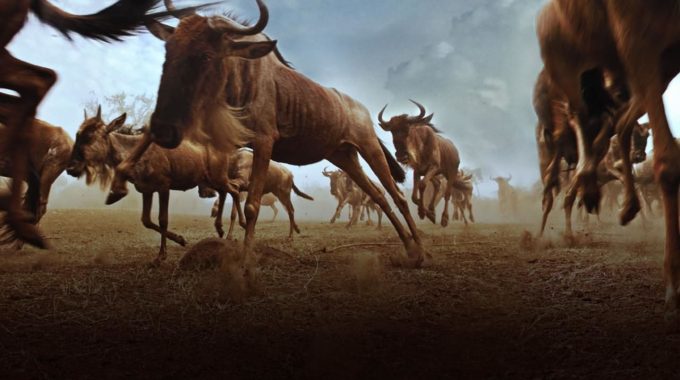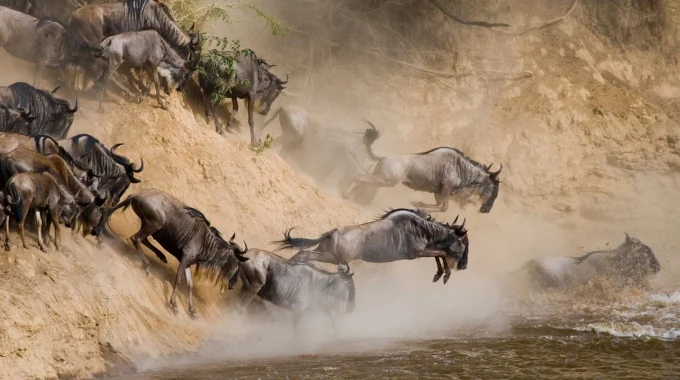How fast do wildebeest reproduce? - Wildebeests (Connochaetes spp.) are iconic members of the African savannas…
Who owns Masai Mara?
Who owns Masai Mara? – The ownership and governance of Masai Mara is a complex issue, involving multiple stakeholders, including the Kenyan government, local Maasai communities, and private landowners. Both public and private lands make up the Masai Mara ecosystem, which is managed by a mix of community agreements, government regulations, and private sector conservation initiatives. Here’s a detailed breakdown:

1. Masai Mara National Reserve (MMNR)
The Masai Mara National Reserve (MMNR) is the most well-known part of the Masai Mara ecosystem. The Narok County Government is in charge of managing it as public land. So, who owns Masai Mara?
- Ownership: Because the reserve is a part of Narok County, the Narok County Government is in charge of managing and overseeing it.
- Size: The MMNR covers about 1,510 square kilometers (or roughly 580 square miles), making it the core protected area of the Masai Mara ecosystem.
- Purpose: The MMNR is a protected area for wildlife conservation, tourism, and research. It is famous for the Great Wildebeest Migration, the Big Five, and its exceptional biodiversity.
2. Private Land Outside the Reserve
Around the Masai Mara National Reserve, there are numerous private lands and conservancies owned by Maasai landowners or private individuals. These lands are crucial for maintaining wildlife corridors and the overall health of the ecosystem.
- Maasai Land Ownership:
The Maasai people are the traditional custodians of much of the land surrounding the MMNR. Over time, much of this land has been sold or leased to tourism operators, private investors, or conservation organizations.- Traditional Land: The Maasai people hold customary ownership over vast tracts of land that have been passed down through generations. However, this land is often collectively owned at the community level, which has led to land use and governance complexities.
- Leases: Many Maasai landowners lease portions of their land to tourism companies and conservation organizations. These leases are usually short- to medium-term contracts (e.g., 10-20 years), which provide income to the landowners while contributing to conservation and eco-tourism efforts.
- Mara Conservancies:
The area surrounding the reserve includes private conservancies, which are critical to the functioning of the Masai Mara ecosystem. These conservancies are often made up of several private parcels of land that are either leased or owned by Maasai communities and then managed through formal agreements with tourism operators or conservation bodies.- Examples of Key Conservancies:
- Mara North Conservancy
- Olare Motorogi Conservancy
- Siana Conservancy
- Naboisho Conservancy
These conservancies are managed through agreements between landowners (usually local Maasai communities) and conservation organizations or tourism companies. In exchange for leasing land for wildlife conservation and eco-tourism, landowners receive revenue and benefits such as jobs, healthcare, and education.
- Examples of Key Conservancies:
3. Private Sector and Tourism Operators
Private tourism companies play a significant role in the Masai Mara’s economy, especially through the luxury safari lodge and camping industries. These companies typically lease land within the conservancies or directly adjacent to the MMNR.
- Leasing Arrangements:
Many of the luxury lodges and camps in the Masai Mara are located in the conservancies rather than the MMNR itself. Apart from being required to follow conservation guidelines, these lodges usually work with local Maasai communities or conservancies.- Leases usually contain revenue-sharing arrangements, whereby a portion of tourism-related profits are reinvested in local development, conservation, and community welfare.
- Eco-Tourism & Conservation:
Many of these private sector initiatives focus on sustainable eco-tourism and wildlife conservation. The Maasai Mara ecosystem, including both the MMNR and surrounding conservancies, benefits from tourism revenues which support not only the preservation of wildlife but also the local Maasai communities.
4. Government Regulations and Conservation Efforts
The Government of Kenya plays a crucial role in overseeing the management of the Masai Mara ecosystem, ensuring that it remains protected for future generations. This is done through various regulations, including:
- Protected Areas and Wildlife Laws:
The government maintains national regulations on wildlife conservation, which apply to both public and private lands. The Kenya Wildlife Service (KWS) is responsible for overseeing wildlife protection efforts in national parks and reserves, but local governance structures, like the Narok County Government, are responsible for the Masai Mara National Reserve specifically. - Conservation Programs:
The government, in partnership with conservation NGOs and private stakeholders, supports initiatives that focus on wildlife corridors, sustainable land management, and reducing human-wildlife conflict.
5. Ownership Breakdown (Who owns Masai Mara?)
- Masai Mara National Reserve: Owned by the Government of Kenya, managed by Narok County Government.
- Private conservancies are either lands that private companies lease from nearby Maasai communities or lands that they own in partnership with Maasai landowners and conservation organizations.
- Local Maasai Communities: Hold customary ownership over large areas of land, which they lease or sell to tourism operators, conservation organizations, or private investors.
6. Revenue Sharing and Community Benefits
The revenue generated from tourism in the Masai Mara is often shared between the following:
- Local Maasai communities: Through land leases, employment, and community development initiatives.
- Private Conservancies: Which reinvest funds into conservation efforts, infrastructure, and other local development programs.
- National Government: Receives income through park fees, and revenues are used for national conservation initiatives.
The community benefits from eco-tourism and wildlife conservation have become a significant aspect of the Masai Mara’s model. In addition to the direct financial gains from land leases, tourism revenue gives Maasai communities access to healthcare, education, and other social services.
Key Points:
- Masai Mara National Reserve: Owned by the Kenyan government, managed by the Narok County Government.
- Surrounding Conservancies: Primarily land leased from Maasai landowners, managed for conservation and tourism.
- Private Sector: Plays a major role in eco-tourism and conservation, often in partnership with Maasai communities.
- Maasai Land Ownership: The Maasai people retain customary ownership of large parts of the land surrounding the MMNR and have significant influence over its management.
Because of this, the Masai Mara is owned in a dispersed but collaborative manner, with private companies, public conservation initiatives, and traditional Maasai land rights all cooperating.



